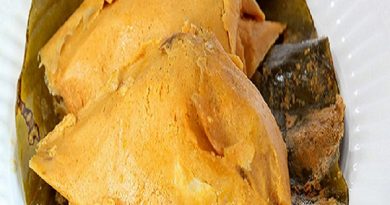The Health Benefits of Panla Fish: A Nutritional Breakdown
The Health Benefits of Panla Fish: A Nutritional Breakdown, Please watch >>>>
Among the various types of Panla, the white panla stands out as the most commonly consumed.
Scientifically known as Merluccius merluccius, this fish is also referred to as European hake, herring hake, or Cape hake in English.

Renowned for its delightful taste and impressive nutritional value, panla fish doesn’t just enhance the flavor of your food—it also supports your overall health.
Health Benefits of Panla Fish
In this article, we’ll explore the nutritional benefits of panla fish, its health advantages, and different ways to prepare it.
First, What Does a Panla Fish Look Like?
While there are several species of panfish, you can usually recognize this one by its unique features:
- Color: It has a long, slightly thick body with a brown or grayish hue.
- Length: It typically ranges from 12 to 16 inches (30 to 70 cm).
- Mouth: Its pointed mouth with sharp teeth makes it easy to identify.
- Head: The head is notably large—about one-third the size of its entire body, often the subject of playful jokes!
- Weight: One panla fish can weigh between 45 to 3.63 kg (up to 8 pounds).
From a nutritional standpoint, consuming 100 grams of panla fish provides approximately 182 calories and 25.4 grams of protein, making it a fantastic energy booster and muscle builder.
Health Benefits of Panla Fish: Nutritional Value of Panla (Hake) Fish
1. Excellent Source of Protein
First and foremost, panla fish is rich in high-quality protein. This nutrient is essential for building and repairing body tissues, like muscles, skin, and bones. Whether you’re trying to build muscle or simply maintain a healthy diet, panla offers a lean, satisfying protein option with minimal fat.
2. Contains Heart-Healthy Fats (Omega-3)
In addition to protein, panla fish also contains omega-3 fatty acids, which are vital for heart health. Omega-3s help:
- Reduce inflammation in the body
- Lower harmful triglyceride levels in the blood
- Improve heart function
Regular consumption of panla may contribute to a lower risk of heart disease.
3. Packed With Essential Vitamins and Minerals
Panla fish is not just about protein and fat—it’s also a great source of essential micronutrients such as:
- Vitamin B12 – crucial for red blood cell production and nerve health
- Selenium – a potent antioxidant that helps reduce oxidative stress and boost the immune system
These nutrients work together to promote energy production, immune defense, and overall vitality.
4. Low in Calories and Saturated Fat
For anyone watching their weight or trying to make heart-smart food choices, panla fish is an ideal option. It is:
- Low in saturated fat
- Relatively low in calories
- Nutrient-dense, meaning it gives you more nutrients per calorie
Opting to grill, steam, or bake your panla with little added oil can help keep meals healthy and light.
5. Supports Bone Health
Thanks to its content of phosphorus and calcium, panla fish helps maintain strong and healthy bones. These minerals also aid in:
- Muscle contraction
- Nerve signaling
- Enzyme function
So, including panla in your meals is a great way to support both your skeletal and muscular systems.
6. Enhances Brain Function
Panla fish’s omega-3 fatty acids—especially DHA (Docosahexaenoic Acid)—are important for brain development and function. DHA is a key component of brain tissue and supports:
- Cognitive function
- Memory and focus
- Protection against age-related decline
Eating panla regularly may help maintain a sharp and healthy mind as you age.
7. Promotes Healthy Skin
Finally, panla fish also benefits your skin health. The combination of omega-3s and selenium:
- Keeps skin moisturized and elastic
- Protects against sun damage and free radicals
- Contributes to a clearer and more radiant complexion
If glowing skin is part of your health goals, panla fish can help you get there naturally.
A Word of Caution: Mercury Content
Although panla fish is highly nutritious, it’s important to be mindful of its mercury content. Mercury is a heavy metal that can sometimes accumulate in fish. Excessive intake can be harmful, especially for pregnant women and young children.
Health Benefits of Panla Fish: The Safety Tips
- Eat panla fish in moderation, —not daily
- Prefer smaller or younger fish, as they typically contain less mercury
Buying and Storing Panla Fish
Panla fish is available year-round, but it is freshest between March and July. When buying, choose fish that:
- Have silvery skin, pink gills, and clear eyes
- Feel firm to the touch
💡 Tip: Avoid fillets, as they can easily fall apart during cooking. Instead, buy whole fish if possible.
Storage Tips:
- Refrigerate for 2–3 days if fresh
- For longer storage, scale, gut, and freeze the fish
Cooking and Preparation Methods
Panla fish is incredibly versatile. You can prepare it in several delicious ways:
- Grilled
- Boiled
- Fried
- Steamed
- Smoked
- Sautéed
- Poached
- Even used for sushi in some cuisines!
Serve it with bold sauces like curry or tomato-based stews for maximum flavor.

Wrapping Up on the Health Benefits of Panla Fish
In summary, panla fish is not just a tasty addition to your meals—it’s a powerhouse of nutrition. With its high protein, omega-3 fatty acids, vitamins, and minerals, it supports the health of your heart, brain, skin, bones, and immune system.
✅ Just remember: moderation is key, y—especially due to potential mercury content.
So the next time you enjoy a delicious panla dish, take pride in knowing you’re not just feeding your taste buds—you’re also nourishing your body!

